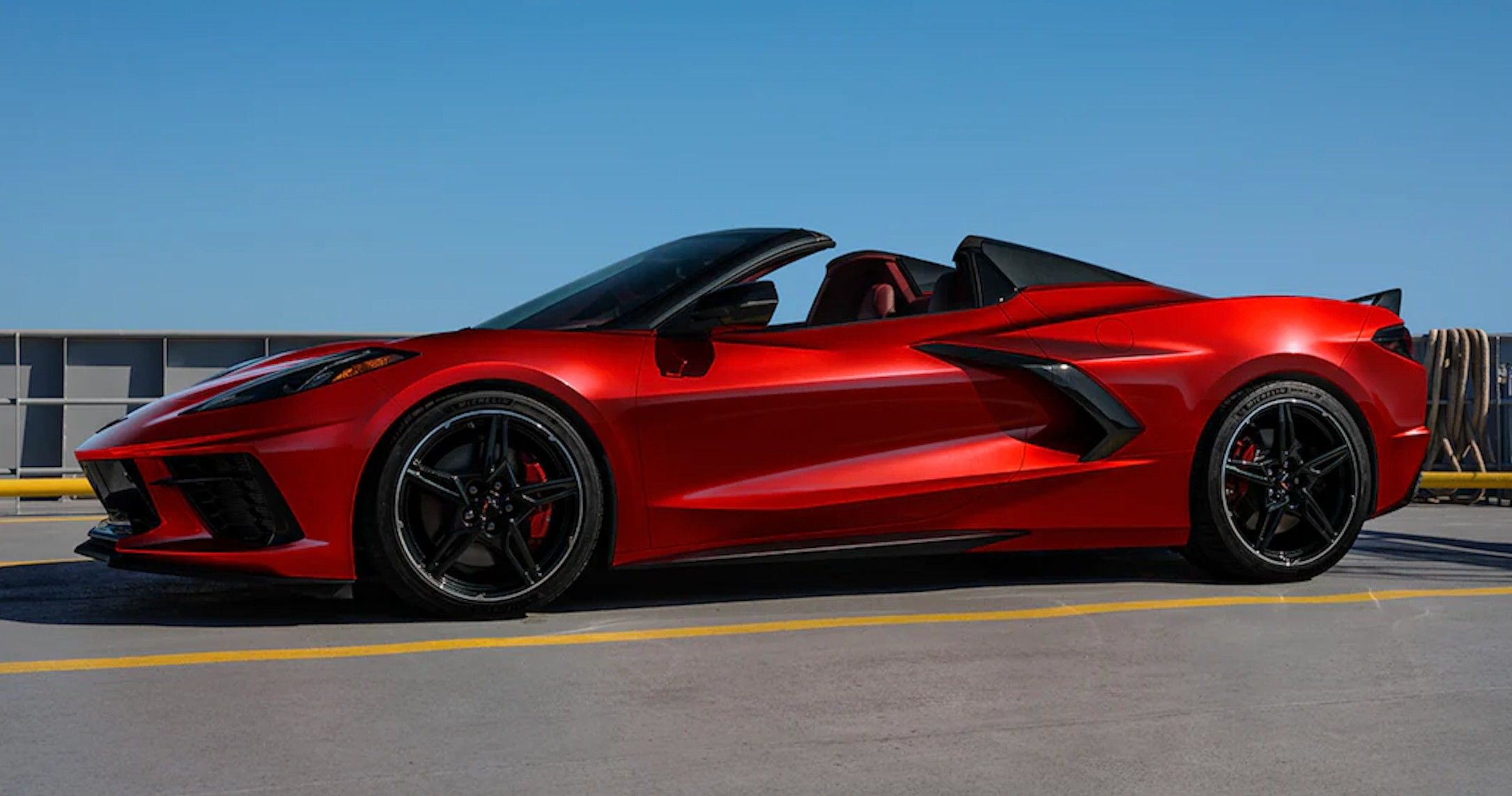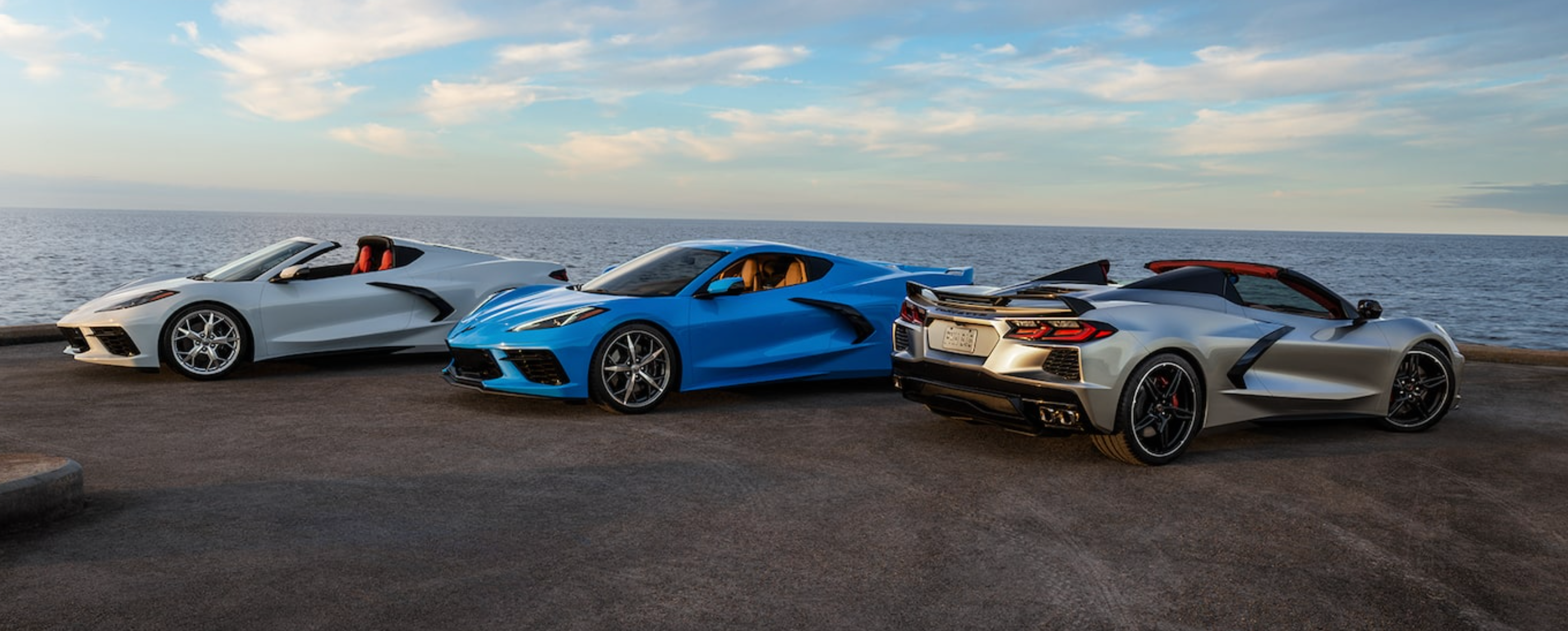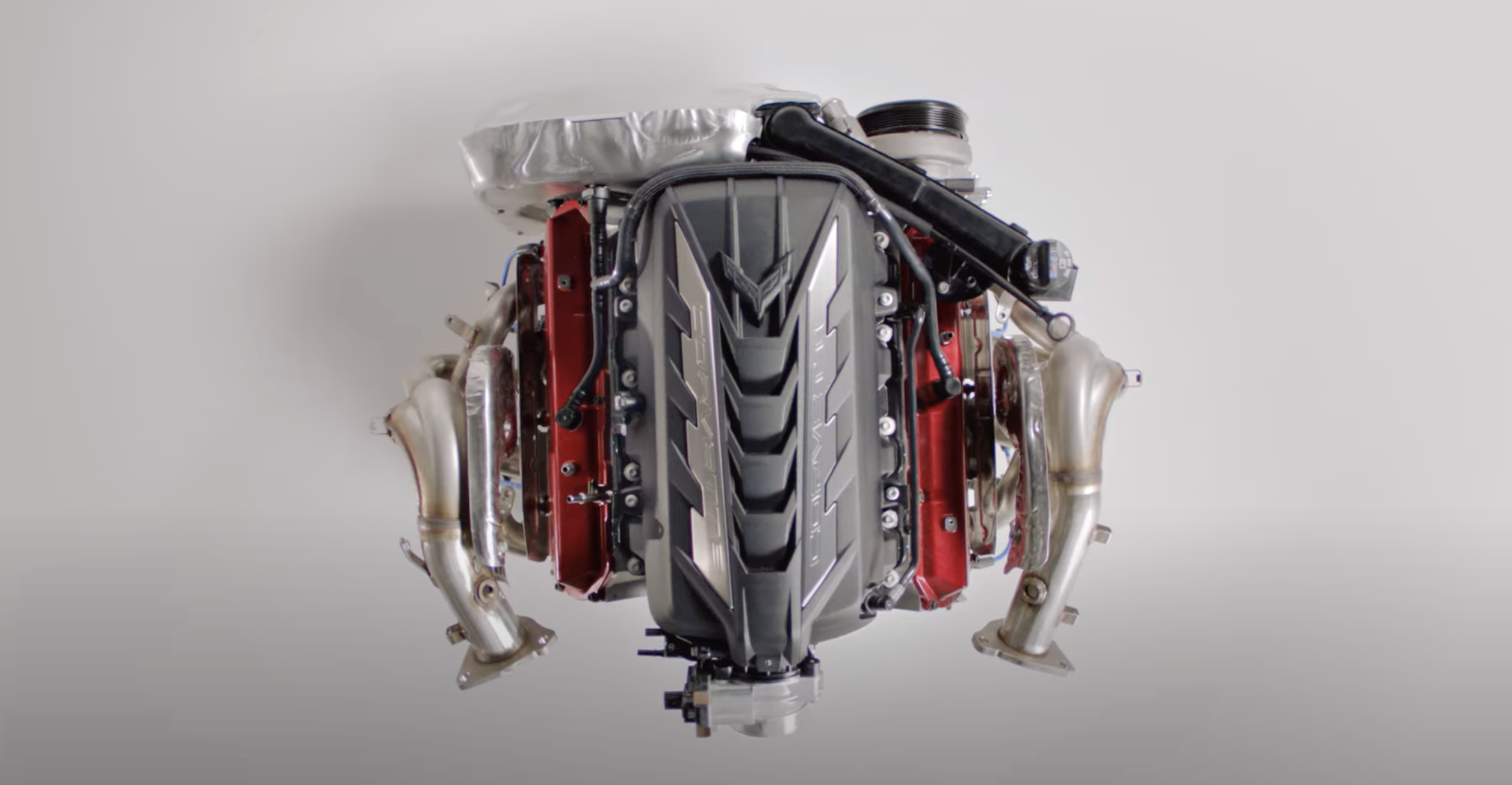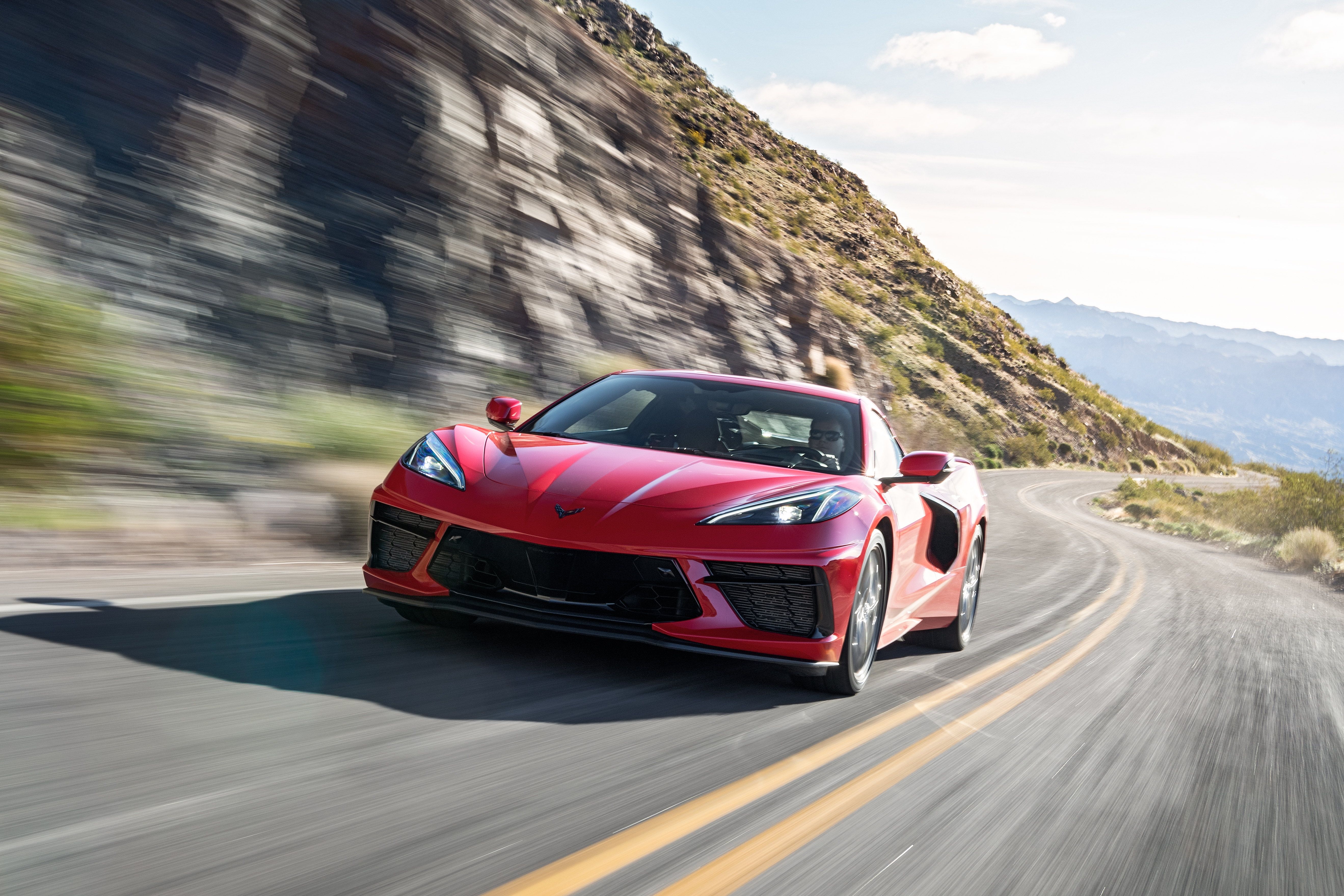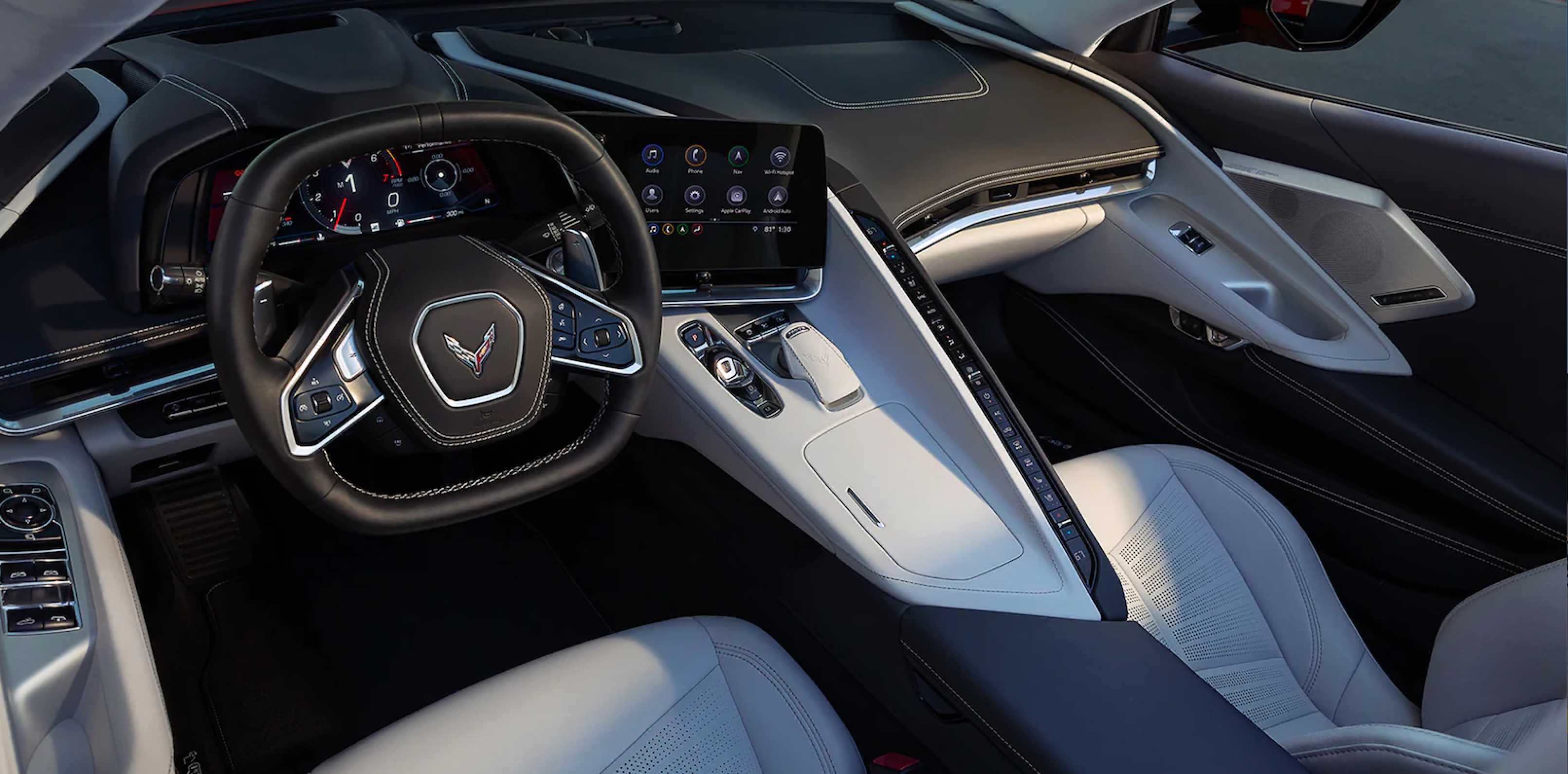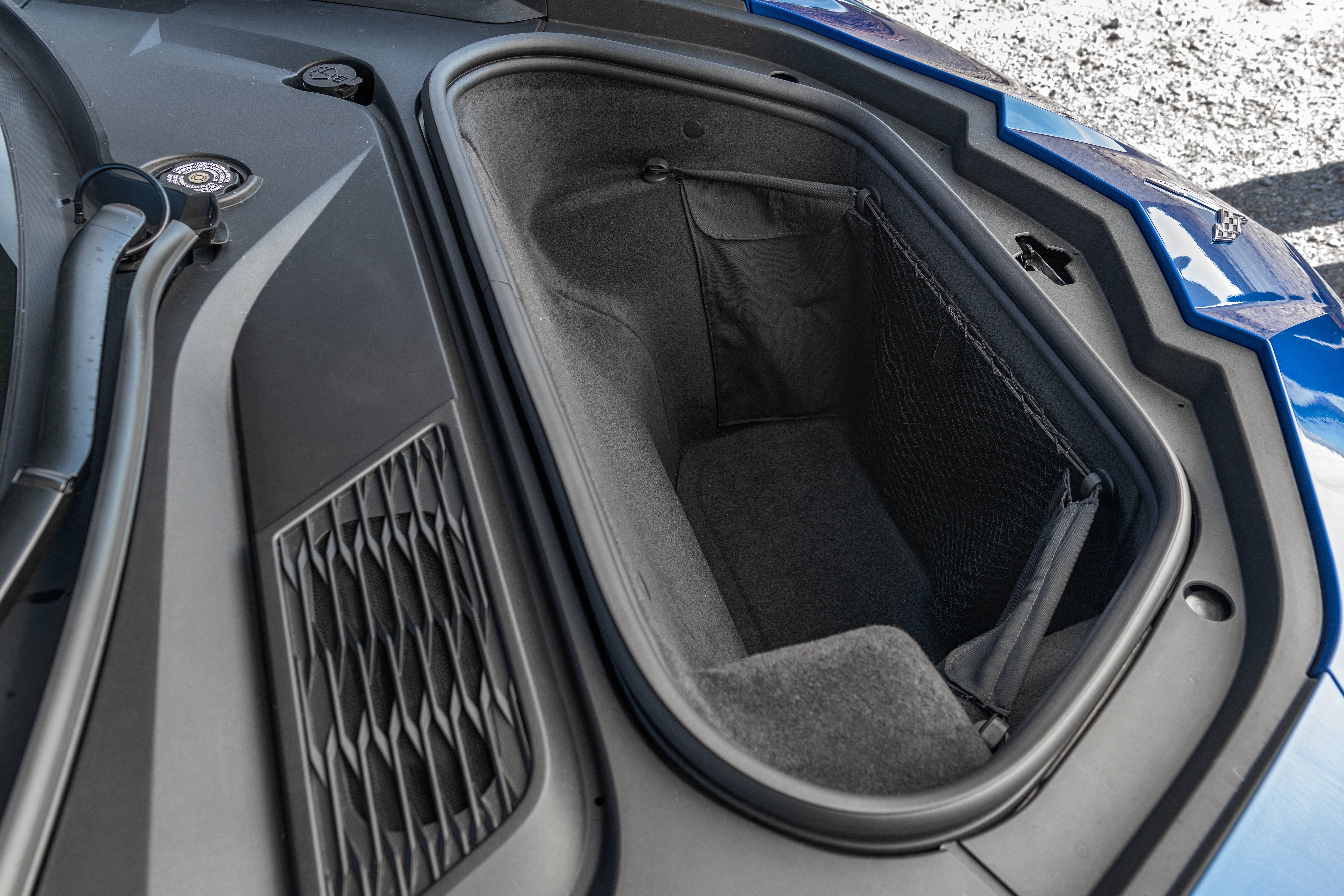Younger readers may be tired of all of the hoopla over the introduction of the mid-engine Corvette. But for those who were around to gawk at a brand new C2 or C3 when new, it is still amazing that after over 50 years of rumors, declarations, and concepts, the mid-engine Corvette is a reality. But now that the hype and excitement have calmed down a bit, let’s take a cost, facts, and figures look at GM’s performance flagship.
It is arguable to say that the Corvette doesn’t have competitors for customers, so much as rivals for bragging rights. It is difficult to imagine a shopper seriously sitting down with brochures or a multi-tabbed browser of pics and spec sheets trying to decide between a Corvette or some other comparably priced car as if they are choosing between a Camry or Accord. You either decide you have the wherewithal to buy a Corvette or you don’t.
Its closest rival was the Dodge Viper, may it RIP; though it never did anything peacefully. That leads us back to the Corvette’s decades-long traditional rivals, which coming from two entirely different angles were the Porsche 911, and whatever the hottest Mustang Cobra was at the time. If we are just talking about the drag strip, we can probably include anything Stellantis has stuffed a Hellcat into. But that would be a waste because the C8 Corvette is so much more than a drag racer. And when it comes to a mix of power and handling specs, the Corvette has long been a low-cost threat to supercars, whose brand names tend to end in vowels.
Legendary Corvette alpha-numerics such as LT1, Z06, or ZR1 are all on the shelf for the moment, as the Stingray is the only Corvette Chevrolet makes which comes in Coupe or Convertible form.
Just One Powertrain Does It
Nestled between the seats and the rear axle of every 2021 Corvette is a naturally-aspirated 6.2-liter V8 mounted longitudinally to an 8-speed dual-clutch Tremec transaxle. It is a descendent of the legendary “chevy small block,” though at this point, it really only shares its basic configuration and bore spacing with that storied engine. It does still have a single camshaft at the bottom activating pushrods and rockers to activate two valves per cylinder. It sounds archaic, but like the 911’s rear-engine configuration, Chevy makes it work.
Nor is the engine old-fashioned, as it features a cast aluminum block and dry sump oil system, variable valve timing, and Active Fuel Management™, which cuts fuel from specified cylinders during steady cruising for improved fuel efficiency. The crankshaft is forged from S38 alloy steel to sustain greater output and the connecting rods are strengthened powder-metal forgings. With engine height less of an issue in its new location, the intake manifold is 3” higher, increasing plenum volume by 19%.
In standard tune, the engine produces 490 hp @ 6450 rpm and 465 lb-ft @ 5150 rpm. The Performance Exhaust or Z51 Performance Package bumps up each figure by 5. The result is a claimed 0-60 in under 3 seconds and a top speed of 190.
Managing the power on its short trip to the rear wheels, through a limited-slip differential is the Tremec 8-speed dual-clutch transaxle. The dual-clutch arrangement results in shifts as fast as a hundred milliseconds, allowing almost no interruption of torque to the wheels. A unique feature allows disengagement of the clutches by holding both shift paddles.
A standard Drive Mode selector knob on the center console can turn the Corvette from a benign cruiser to a velociraptor with anger issues. It impacts a number of different systems, including the powertrain, steering, suspension, brakes, exhaust, and if so equipped, the Magnetic Ride Control. Mode selection is indicated in the gauge cluster screen. Settings include Tour, Weather, Sport, and Track, which is recommended only…well, on a track. There is also My Mode and Z-Mode, both of which can be individually programmed by the owner.
Impressive Chassis And Handling Hardware
The suspensions consist of Short/long arm (SLA) double wishbones all-around, including forged aluminum upper and cast aluminum L-shaped lower control arms. 46 mm monotube dampers are standard, while GM’s Magnetic Ride Control is available, in which the dampers are filled with a suspension fluid containing metal particles that align in a magnetic field, variably changing the fluid viscosity in as little as 10-15 milliseconds, allowing the damper to go from soft to hard, to anywhere according to conditions. Those conditions are based on a sensor that system reads the road every millisecond and adjusts accordingly.
Wheels are staggard, with 19” in front and 20” in the rear. A binary traction control system just won’t do, so the Performance Traction Management system has no less than five settings. Brakes are Brembo® units all-around with 4-piston/2-piece front calipers grabbing 12.6" front rotors and 4-piston/monobloc rear calipers with 13.3" rotors in the rear.
One thing that has become apparent to drivers, particularly on the track, is that the C8 has a bit of an understeer issue. That is normally the first thing mid-engine layouts are supposed to avoid. GM engineers state this is intentional as understeer is safer than oversteer. Chalk it up as part of a transition stage from the front-drive configuration that may diminish with higher performance editions and future redesigns.
A Completely Modern And Unique Interior
Interiors used to be Corvette’s biggest weak spot. Some of the shapes were sporty but before the C7, materials and switchgear were rarely any different than found in an Impala. It was almost part of Corvette’s charm. Who among us hasn’t peered inside an original C2 Stingray and smiled at the standard GM Delco radio stuffed vertically in the center dash that was too narrow to fit it normally?
Well, that is all changed now. The C8 cabin has a completely unique aggressively driver-focused interior design. Everything is exclusive from the squared-off steering wheel to the LED gauge cluster, to the pushbutton transmission control to the switchgear placed on a long thin vertical ridge between driver and passenger. It looks like no other car, anywhere.
Everywhere you look there is an edge, surface material change, or contrast stitching. Even the lining of the convertible hardtop has a stitching design that resembles a Frank Lloyd Wright doodle. You can argue aesthetics when comparing against the world’s supercars, but no one can accuse Chevrolet interior designers of phoning it in.
And for those who remember when the C3 didn’t even have a truck, the mid-engine Corvette has one you can fit a golf bag into. And upfront is a frunk that can fit a brief-case or daypack.
Trims And Pricing
Chevrolet announced in the last week of February that prices for all trims would increase by $1000 on March 1st. Past that date, the change is not yet reflected on their website, but we will take them at their announced word and display the prices accordingly. As mentioned, the Stingray is the only Corvette model for 2021, and both the coupe and convertible have the same three trim levels, named simply: 1LT, 2LT, 3LT
1LT – Starting MSRP Coupe: $60,995, Convertible: $69,495.
The base model starts with Mulan leather 8-way power-adjustable seats. The driver gets things going with a keyless push-button start. Seen through the leather-wrapped flat-bottom steering wheel, is the 12-inch Color Driver Information Center serving as the gauge cluster. To the right, angled very much to the driver is an 8-inch touch-screen, mostly for the Bose 10-speaker Audio System, other infotainment settings, and the HD Rear Vision Camera and Rear Park Assist†
The convertible has a power-retractable hardtop that can be raised or lowered at speeds up to 30 mph. When up, the top includes a power window that can be opened independently of the top. The top can also be lowered remotely using the key fob.
2LT – Starting MSRP Coupe: $68,295, Convertible: $75,295.
This level mostly raises the interior content. Seats are heated and ventilated with power lumbar and side bolster adjust. Memory covers the driver’s seat and several other personal settings. The Bose audio system is upgraded and has 14 speakers, which is a lot for such a small space. There is a head-up display, wireless phone charging, heated steering wheel, navigation system, and a neat curb view camera. You have alerts for blind zone, and rear cross-traffic, plus power-folding mirrors and GM’s Advanced Theft-Deterrent System.
3LT – Starting MSRP Coupe: $72,945, Convertible: $70,995.
The top-level is all about leather indulgence with special GT3 Seats with a mix of Napa Leather, suede, and carbon-fiber trim, plus more leather and suede all around the interior.
Sources: Chevrolet Website, Chevrolet Media, Ward’s Auto World, GMAuthority

